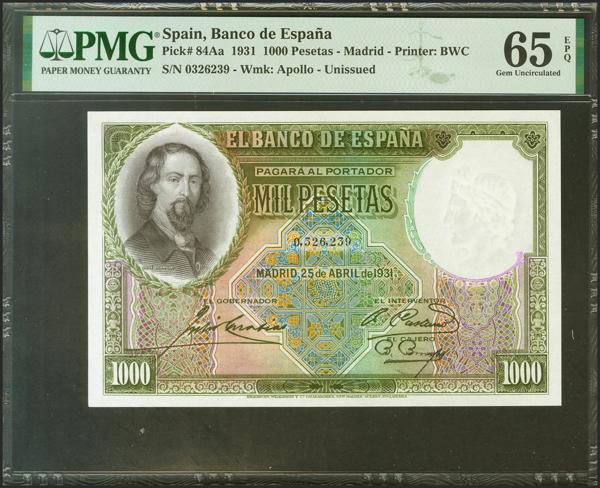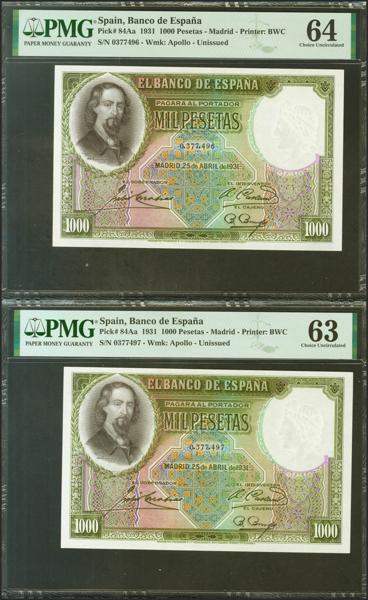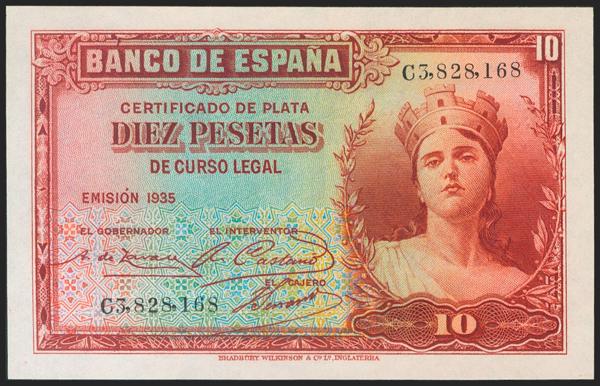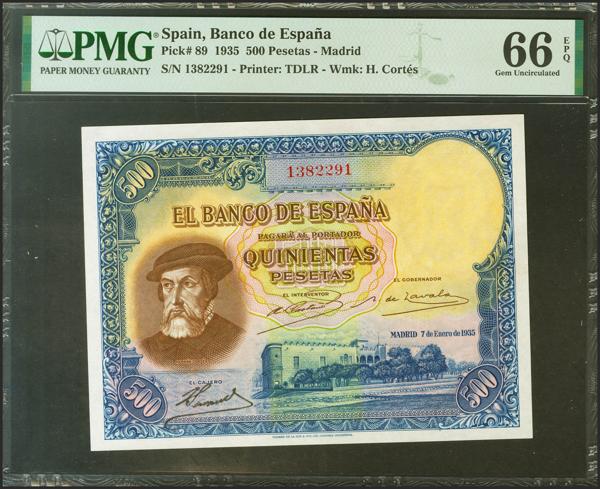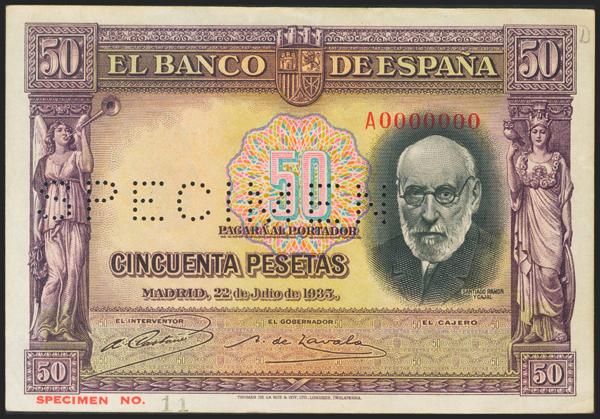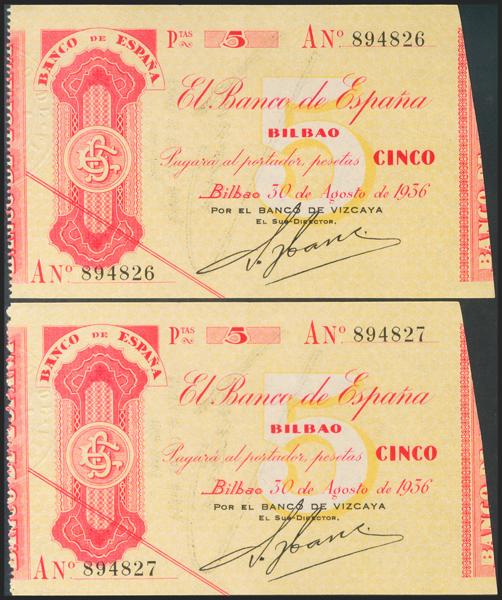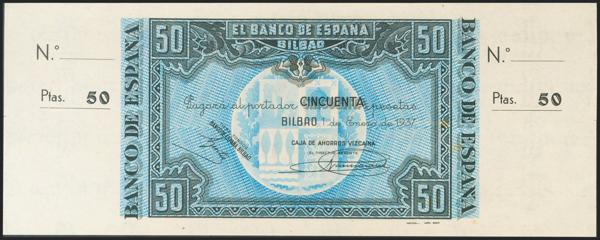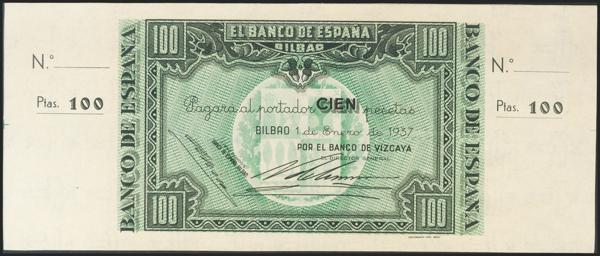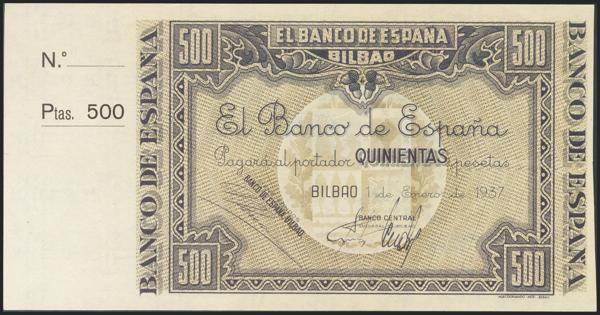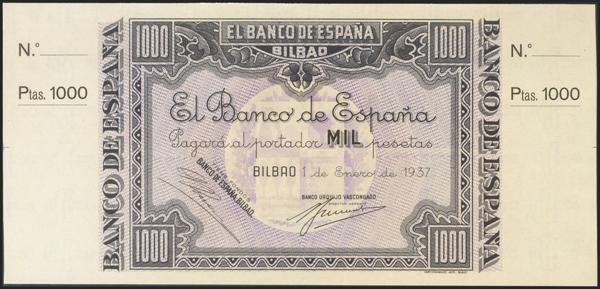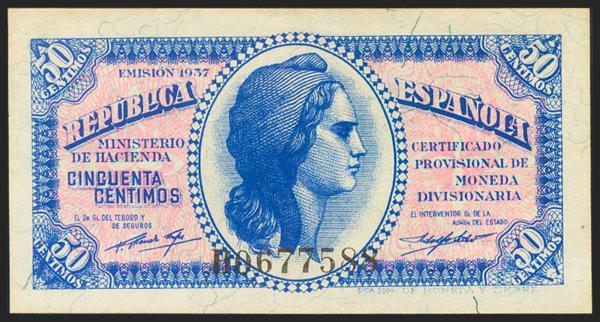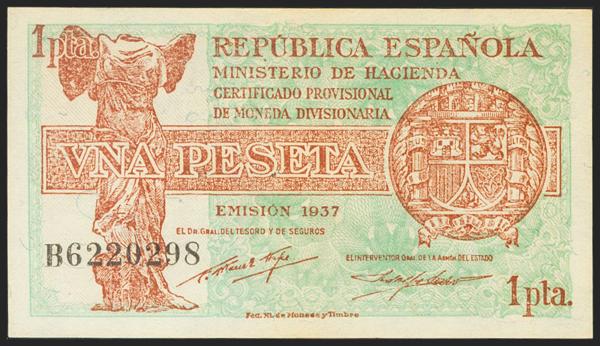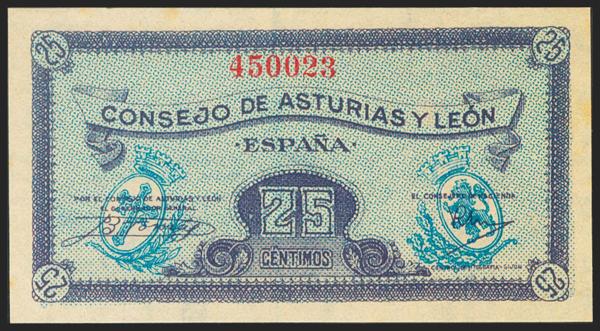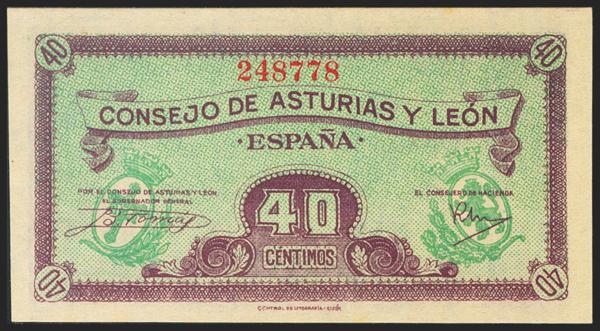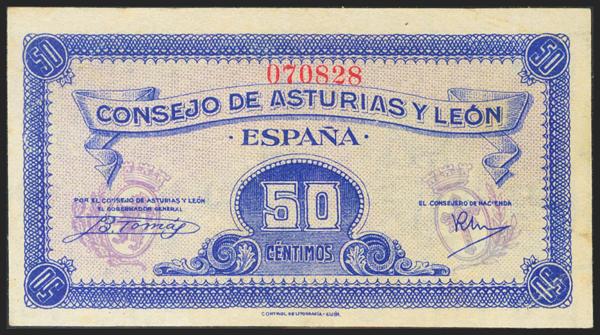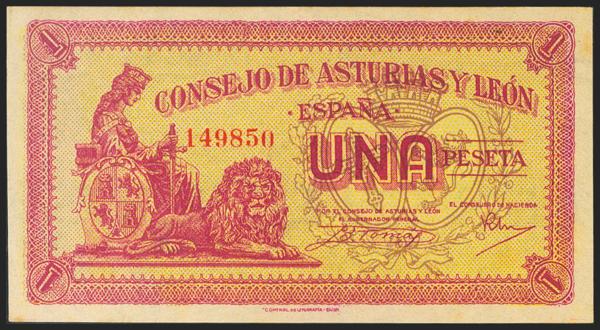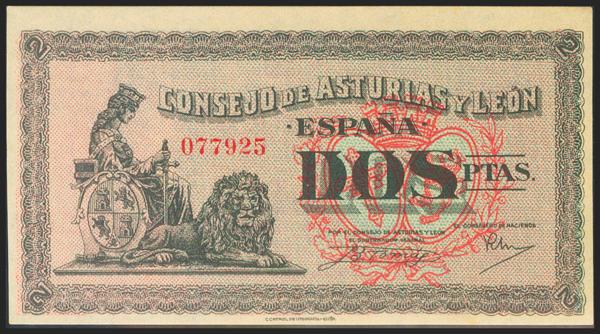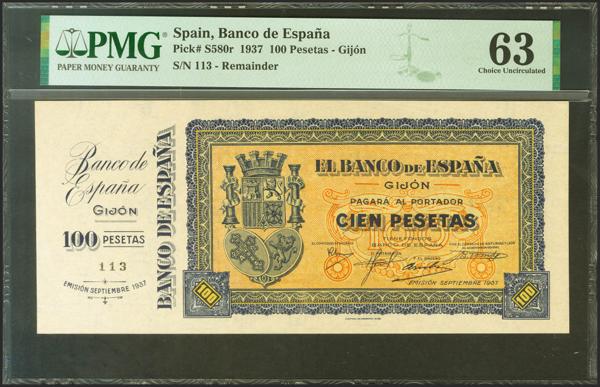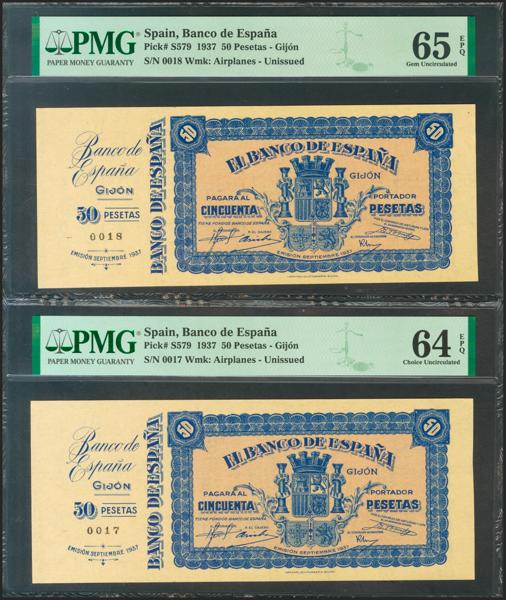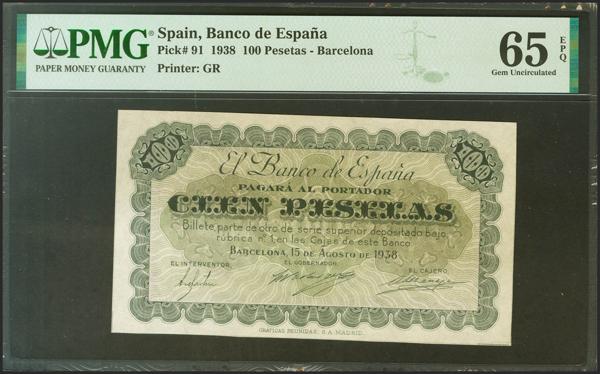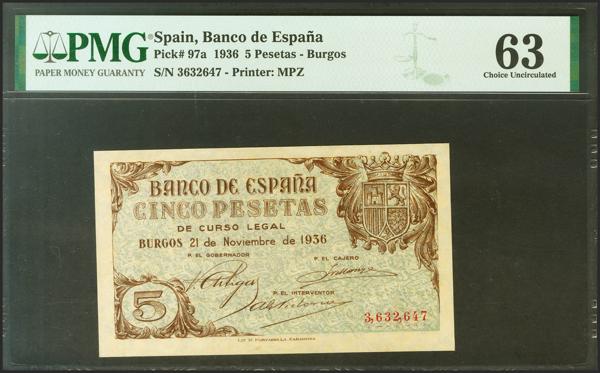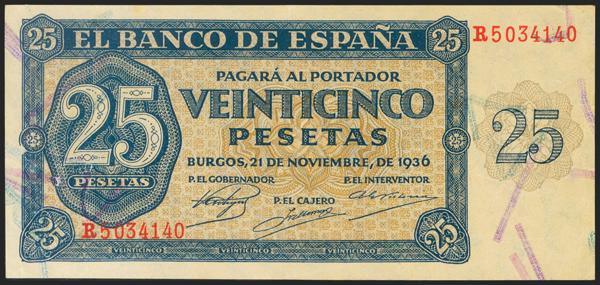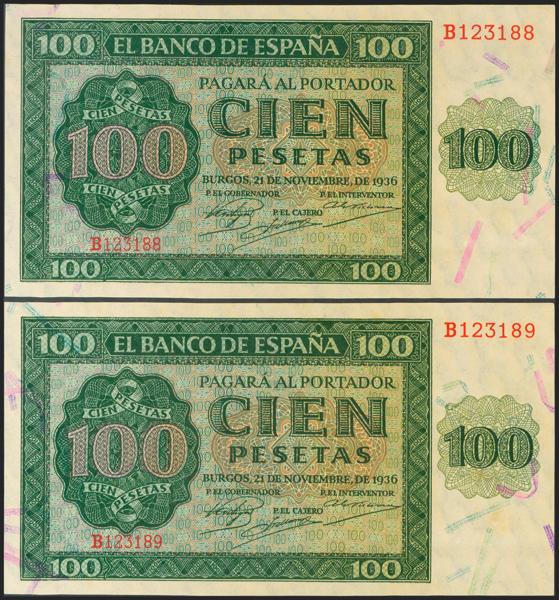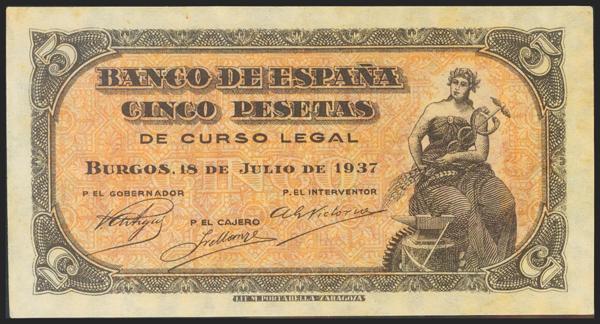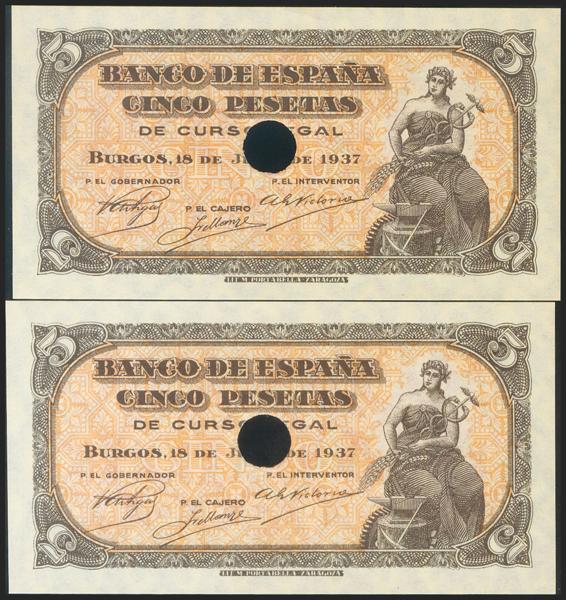Orpheus Collection #66
Tuesday, 12 April 2022 | Madrid, 16:00 CEST
1 | Spanish Bank Notes
100 Reales of Fleece. May 30, 1870. Tour de Peilz broadcast. Series A. (Edifil 2021: 196). Good Extremely Fine.
Automatically generated translation
2 | Spanish Bank Notes
100 pesetas. January 1, 1900. Series A. (Edifil 2021: 308, Pick: 51a). Unusual in this state of conservation, presenting its original sizing. Almost Extremely Fine. PMG35EPQ package.
Automatically generated translation
3 | Spanish Bank Notes
50 pesetas. November 30, 1902. Obverse proof. (Edifil 2017: 309P). Very light original paper bellows. Almost Uncirculated.
Automatically generated translation
4 | Spanish Bank Notes
100 pesetas. June 30, 1906. No series. (Edifil 2021: 313). It retains much of the original sizing, unusual in this conservation, very attractive. Extremely Fine.
Automatically generated translation
5 | Spanish Bank Notes
25 pesetas. September 24, 1906. Nº0.000.000, drilled SPECIMEN in the place of the cashier's signature and print run control on the back from 0.000.001 to 4.000.000. (Edifil 2021: 314P, Pick: 57s). Rare, from the Bradbury archive. Uncirculated. PMG63 package.
Automatically generated translation
6 | Spanish Bank Notes
50 pesetas. September 24, 1906. No series. (Edifil 2021: 315, Pick: 58a). Unusual in this conservation. EBC++. PMG58 encapsulation.
Automatically generated translation
7 | Spanish Bank Notes
50 pesetas. September 24, 1906. Obverse color proof. (Edifil 2021: 315Pa, Pick: 58p1). Strange. Uncirculated. PMG61 package.
Automatically generated translation
8 | Spanish Bank Notes
25 pesetas. July 15, 1907. No series. (Edifil 2021: 318). It retains much of the original sizing, unusual in this conservation, very attractive. Extremely Fine.
Automatically generated translation
9 | Spanish Bank Notes
100 pesetas. July 15, 1907. Without series and numbering 000000, SPECIMEN drilled and without cashier's signature. (Edifil 2021: 320M). Presents all its original sizing. Uncirculated.
Automatically generated translation
10 | Spanish Bank Notes
Proof of the reverse in black of the unissued 25 Pesetas banknote of December 1, 1908. (Edifil 2021: NE14Pb). Almost Uncirculated.
Automatically generated translation
11 | Spanish Bank Notes
500 pesetas. January 25, 1925. Obverse proof in black of an unissued ticket. (Edifil 2021: NE22P). Strange. Uncirculated.
Automatically generated translation
12 | Spanish Bank Notes
50 pesetas. May 17, 1927. SPECIMEN and numbering 0,000,000. (Edifil 2017: 326M, Pick: 72s). Very rare, retains all its original sizing. Good Extremely Fine. PMG58EPQ package.
Automatically generated translation
13 | Spanish Bank Notes
500 pesetas. July 24, 1927. No series and previous numbering of 1602000. (Edifil 2021: 327, Pick: 73a). Very rare in this quality, especially with the Alfonso XIII numbering. Uncirculated. PMG63 package. (to get an idea of its rarity, as of March 15, 2022, this banknote is the fifth best preserved along with 3 other banknotes)
Automatically generated translation
14 | Spanish Bank Notes
25 pesetas. October 12, 1926. Correlative couple. Series A and dry stamp "PROVISIONAL GOVERNMENT OF THE REPUBLIC-APRIL 14, 1931". (Edifil 2021: 335). Very rare, original sizing. Good Extremely Fine.
Automatically generated translation
15 | Spanish Bank Notes
500 pesetas. July 24, 1927. No series and later numbering 1602000 with apocryphal dry stamp "BANCO DE ESPAÑA-SECURIDAD". (Edifil 2021: 352). Good Very Fine.
Automatically generated translation
16 | Spanish Bank Notes
500 pesetas. August 15, 1928. Correlative couple. No serie. (Edifil 2021: 356). Retains all the original sizing, slight waviness. EBC+++.
Automatically generated translation
17 | Spanish Bank Notes
100 pesetas. August 15, 1928. Correlative couple. Without series and with apocryphal dry stamp "BANCO DE ESPAÑA-SECURIDAD". (Edifil 2021: 357). It retains much of its original sizing. Good Extremely Fine.
Automatically generated translation
18 | Spanish Bank Notes
25 pesetas. April 25, 1931. No series. (Edifil 2021: 358). It retains all its original sizing. Almost Uncirculated.
Automatically generated translation
19 | Spanish Bank Notes
50 pesetas. April 25, 1931. No series. (Edifil 2021: 359). Retains all its original sizing, invisible vertical fold. EBC+++.
Automatically generated translation
20 | Spanish Bank Notes
100 pesetas. April 25, 1931. No series. (Edifil 2021: 360). It retains all its original sizing. Uncirculated.
Automatically generated translation
21 | Spanish Bank Notes
500 pesetas. April 25, 1931. Correlative couple. No serie. (Edifil 2021: 361). It retains all its original sizing. Almost Uncirculated.
Automatically generated translation
22 | Spanish Bank Notes
1000 Pesetas. April 25, 1931. No series. (Edifil 2021: 362, Pick: 84Aa). It retains all its original sizing. Uncirculated. PMG65EPQ package.
Automatically generated translation
23 | Spanish Bank Notes
1000 Pesetas. April 25, 1931. Correlative couple. No serie. (Edifil 2021: 362, Pick: 84Aa). Uncirculated. PMG64/63 package.
Automatically generated translation
24 | Spanish Bank Notes
5 pesetas. 1935. Silver Certificate. Series D. (Edifil 2021: 363a). It retains all its original sizing. Almost Uncirculated.
Automatically generated translation
25 | Spanish Bank Notes
10 pesetas. 1935. Silver Certificate. Series C, last series issued. (Edifil 2021: 364a). It retains all its original sizing. Uncirculated.
Automatically generated translation
26 | Spanish Bank Notes
500 pesetas. January 7, 1935. No series. (Edifil 2021: 365, Pick: 89). It retains all its original sizing. Uncirculated. PMG66EPQ package.
Automatically generated translation
27 | Spanish Bank Notes
50 pesetas. July 22, 1935. Series A, numbering 0.000.000, hole "SPECIMEN" and without cashier's signature. (Edifil 2021: 366M). Very rare, it retains all its original sizing. Good Extremely Fine.
Automatically generated translation
28 | Spanish Bank Notes
5 pesetas. August 30, 1936. Correlative couple. Series A and signature of Banco de Vizcaya. (Edifil 2021: 368Aa). Good Extremely Fine.
Automatically generated translation
29 | Spanish Bank Notes
25 pesetas. August 31, 1936. Series A. (Edifil 2021: 367a). Original sizing. Almost Uncirculated.
Automatically generated translation
30 | Spanish Bank Notes
50 pesetas. January 1, 1937. Bilbao branch, signed by Caja de Ahorros Vizcaína. Without series and without numbering, with both matrices. (Edifil 2021: 389f). Almost Uncirculated.
Automatically generated translation
31 | Spanish Bank Notes
100 pesetas. January 1, 1937. Bilbao branch, presigned by Banco de Vizcaya. Without series and without numbering, with both matrices. (Edifil 2021: 390b). Almost Uncirculated.
Automatically generated translation
32 | Spanish Bank Notes
500 pesetas. January 1, 1937. Bilbao branch, signature of the Central Bank, without series, without numbering and with a single matrix on the left. (Edifil 2021: NE26b). Uncirculated.
Automatically generated translation
33 | Spanish Bank Notes
1000 Pesetas. January 1, 1937. Ticket not issued. Bilbao branch, presigned by Banco Urquijo Vascongado. Without series and without numbering, with both matrices. (Edifil 2021: NE27f). Uncirculated.
Automatically generated translation
34 | Spanish Bank Notes
50 cents. 1937. Series B. (Edifil 2021: 391). Original sizing. EBC++.
Automatically generated translation
35 | Spanish Bank Notes
1 Peseta. 1937. Series B. (Edifil 2021: 392). Original sizing. Uncirculated.
Automatically generated translation
36 | Spanish Bank Notes
2 pesetas. 1937. Series A. (Edifil 2021: 393). Original sizing. Uncirculated.
Automatically generated translation
37 | Spanish Bank Notes
25 cents. 1937. Asturias and León. No serie. (Edifil 2021: 394). Original sizing. Almost Uncirculated.
Automatically generated translation
38 | Spanish Bank Notes
40 cents. 1937. Asturias and León. No serie. (Edifil 2021: 395). Original sizing. Uncirculated.
Automatically generated translation
39 | Spanish Bank Notes
50 cents. 1937. Asturias and León. No serie. (Edifil 2021: 396). Very rare like this, original sizing. Almost Uncirculated.
Automatically generated translation
40 | Spanish Bank Notes
1 Peseta. 1937. Asturias and León. No serie. (Edifil 2021: 397). Original sizing. Uncirculated.
Automatically generated translation
41 | Spanish Bank Notes
2 pesetas. 1937. Asturias and Leon. No serie. (Edifil 2021: 398). Original sizing. Uncirculated.
Automatically generated translation
42 | Spanish Bank Notes
100 pesetas. September 1937. Without series, with numbering and with matrix on the left. (Edifil 2021: 399a, Pick: S580r). Uncirculated. PMG63 package.
Automatically generated translation
43 | Spanish Bank Notes
50 Pesetas NOT ISSUED. September 1937. Bank of Spain, Gijón. Correlative pair. Without series, with matrix on the left and numbered for its use. (Edifil 2017: NE33, Pick: S579). Extraordinarily rare correlative pair, probably the only one known. Uncirculated. PMG65EPQ/64EPQ. (as of November 1, 2021 there are 3 notes graduated with 65EPQ and one with 64EPQ, precisely the one we offer, the rest have lower graduations).
Due to the impossibility of shipments from the Central Government, an impossibility caused by strict maritime control in the Bay of Biscay, the Basque Country and Santander as it was led by the national side, the Asturias council experienced setbacks due to lack of billing. After this situation, the production of banknotes with dates of September 1937 is prescribed against the state prohibition. The planned issue was made up of three notes of 25, 50 and 100 Pesetas, of which only the 100 Pesetas was put into circulation and only for 14 days. These banknotes were designed by Germán Horacio Robles, along with his lithographic watermarks, in the Natahoyo neighborhood of Gijón. Those with a value of 50 or 100 Pesetas are signed by Belarmino Tomás (Governor of the Council of Asturias and León) and by Rafael Fernández (Minister of Finance), for this reason they are known as "Belarminos". To get an idea of the rarity of the 50 Peseta bill, we literally capture a reference by the expert Ramón Cobo Huici, in Numismático Digital: "These 50 peseta bills can be found with and without the matrix cut, with an approximately equal number of copies in both conditions, about 96 copies in total. Very few copies can also be found in a vertical pair, without separating" The issue was not completed due to the fall of Gijón into national hands.
Source: Ramón Cobo Huici. Antonio Amat, Encyclopedia of banknotes of Spain. Inés Montes, The New Spain.
Automatically generated translation
44 | Spanish Bank Notes
100 pesetas. August 15, 1938. Provisional banknote for 2 years not issued from the Bank of Spain, Barcelona. No serie. (Edifil 2017: NE37, Pick: 91). The issuance of this banknote was planned to originate in the Catalan branch of Barcelona, which was printed in the Gráficas Reunidas workshops in Madrid, due to the vicissitudes of the Civil War it was not issued and they were destroyed, only very few specimens are known, the Edifil catalog mentions three color combinations. Original sizing. Uncirculated. PMG65EPQ package.
Automatically generated translation
45 | Spanish Bank Notes
5 pesetas. November 21, 1936. No series. (Edifil 2021: 417, Pick: 97a). Very rare in this exceptional quality (to get an idea of the rarity of this banknote as of November 1, 2021, in this quality PMG gives it the ninth best rating together with 3 banknotes). Uncirculated. PMG63 package.
Automatically generated translation
46 | Spanish Bank Notes
25 pesetas. November 21, 1936. Series R. (Edifil 2021: 419a). Presents almost all of the original sizing. Good Extremely Fine.
Automatically generated translation
47 | Spanish Bank Notes
50 pesetas. November 21, 1936. Series Q. (Edifil 2021: 420a, Pick: 100a). EBC++. PMG58 encapsulation.
Automatically generated translation
48 | Spanish Bank Notes
100 pesetas. November 21, 1936. Correlative couple. Series B. (Edifil 2021: 421a). Retains much of the original sizing. Good Extremely Fine.
Automatically generated translation
49 | Spanish Bank Notes
5 pesetas. July 18, 1937. No series. (Edifil 2021: 424). Original sizing. Good Extremely Fine.
Automatically generated translation
50 | Spanish Bank Notes
5 pesetas. June 18, 1937. Correlative couple. Series C, last series issued. Drilled and with staple points. (Edifil 2017: 424a). Original sizing. Almost Uncirculated.
Automatically generated translation






















